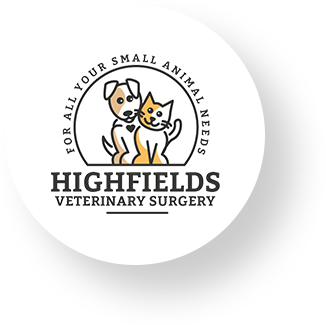How To Protect Your Dog From Parvo
It's always an exciting and special experience to have a new puppy or dog in the family. This special and exciting time can quickly become a disaster if the new pet is unfortunate to face a bout of "parvo". Parvo is a nightmare for dogs - it can turn a healthy, playful puppy or dog into one that is fatally unwell.
What is parvo?
Parvo is an extremely dangerous, extremely contagious virus that affects the gastrointestinal system and is a life threatening illness. The dangers of parvo are heightened by how easily it spreads through the dog population, particularly through unvaccinated dogs - whether they're a puppy, adolescent dog or adult dog.
The virus is most common in dogs under 1 years old, with puppies that are under 5 months most dramatically affected, hardest to treat and most at risk of loss of life.
What are the symptoms of parvo in dogs?
- Severe diarrhoea, commonly containing blood
- Lethargy
- Severe vomiting
- Fever
- Loss of appetite
- Weakness
- Dehydration
Please note - dogs might not show all of these symptoms.
Who is most at risk of parvo?
- Younger dogs between 6 weeks and 6 months old.
- Unvaccinated or incompletely vaccinated dogs are most at risk.
- Breeds of dogs that are black and tan in colour are more susceptible, although it's unknown why.
How is parvo spread?
A resilient virus, parvo can survive long periods of time in the environment and surfaces - it can survive against most disinfectants, temperatures and conditions, surviving in soil for up to seven years!
Transmission occurs most often through direct contact with an infected dog or infected feces, saliva or vomit.
Due to the resilience to survive on surfaces, it's also possible that transmission can occur through contact with a human who has the virus on their clothing, shoes or skin. Humans can pick the virus up from coming in contract with a dog who is simply carrying infected, fecal particles on their hairs or paws, or even if the human steps in infected feces on the street.
Adult unvaccinated dogs can be carriers of Parvo Virus with minimal to no symptoms, therefore it is important to ensure your puppy is fully vaccinated before taking your puppy to public areas like parks or to a friends house where they may come in contact with other dogs.
Dogs licking or sniffing a contaminated surface like a bowl or carpets can also become infected.
As you can see, transmission is incredibly easy. With how difficult it is to kill on surfaces, it's almost impossible to even be aware that you've come into contact with it.
How can you prevent parvo in dogs?
The only effective form of protection for your dog is vaccination and withholding interaction with other dogs until they've completed their vaccination schedule. Puppies require a sequence of vaccinations in line with the recommendations provided by your veterinarian.
After the final vaccination, your puppy still won't have full immunity against the virus until two weeks after. While it's tempting to take your puppy out and with you everywhere you go, it could be devastating for their health and life if you do.
Unvaccinated puppies or incompletely vaccinated puppies can't be exposed to unvaccinated adult dogs or any environments where parvovirus might be living such as kennels or dog parks.
If you have fully-vaccinated dogs already within the home, it'll be safe for the new puppy to socialise and interact with those dogs.
Their safety and health depends on you keeping them away from other dogs in parks or outside your home until they've completed their vaccination schedule.
How is parvo treated?
When a dog becomes infected with parvo, it can progress rapidly and have fatal consequences very quickly. If you suspect your dog has come into contact with parvo or are concerned they're showing symptoms, it's vital you get in touch with a veterinarian immediately.
Treatment generally involves hospitalsations, with a plan involving IV fluids, antibiotics, anti-vomiting medications and pain management.
If the illness has progressed to the severe stage or depending on the dog's age, they may require more intensive treatments such as blood transfusions.
Parvo attacks the dogs white cell count, leaving their immunity vulnerable and their ability to fight off an infection reduced - another reason it's vital the ill dog receives veterinary care immediately.
Despite treatment, some dogs will still lose their lives to parvo.
Understanding the signs, risk factors and prevention measures of parvo is critical to any pet owner to ensure dogs have the best protection and the best chance at survival if it were to catch it.
Fast facts about Parvovirus:
- Early vaccination, as well as FULL, complete vaccination is the most effective form of prevention.
- Puppies and young dogs are at high risk of infection and death.
- Symptoms include severe diarrhea, severe vomiting, lethargy, fever and weakness.
- Puppies need to be kept isolated from areas where dogs congregate (such as parks or kennels) until they've completed their vaccinations.
- Parvo is life threatening - even after receiving treatment, some dogs will still succumb to the illness.
If you suspect your dog is sick, call us immediately on (07) 4630 8399.
Alternatively, book an appointment or contact us to discuss parvo vaccinations and boosters for your puppy or dog during a clinic visit.


